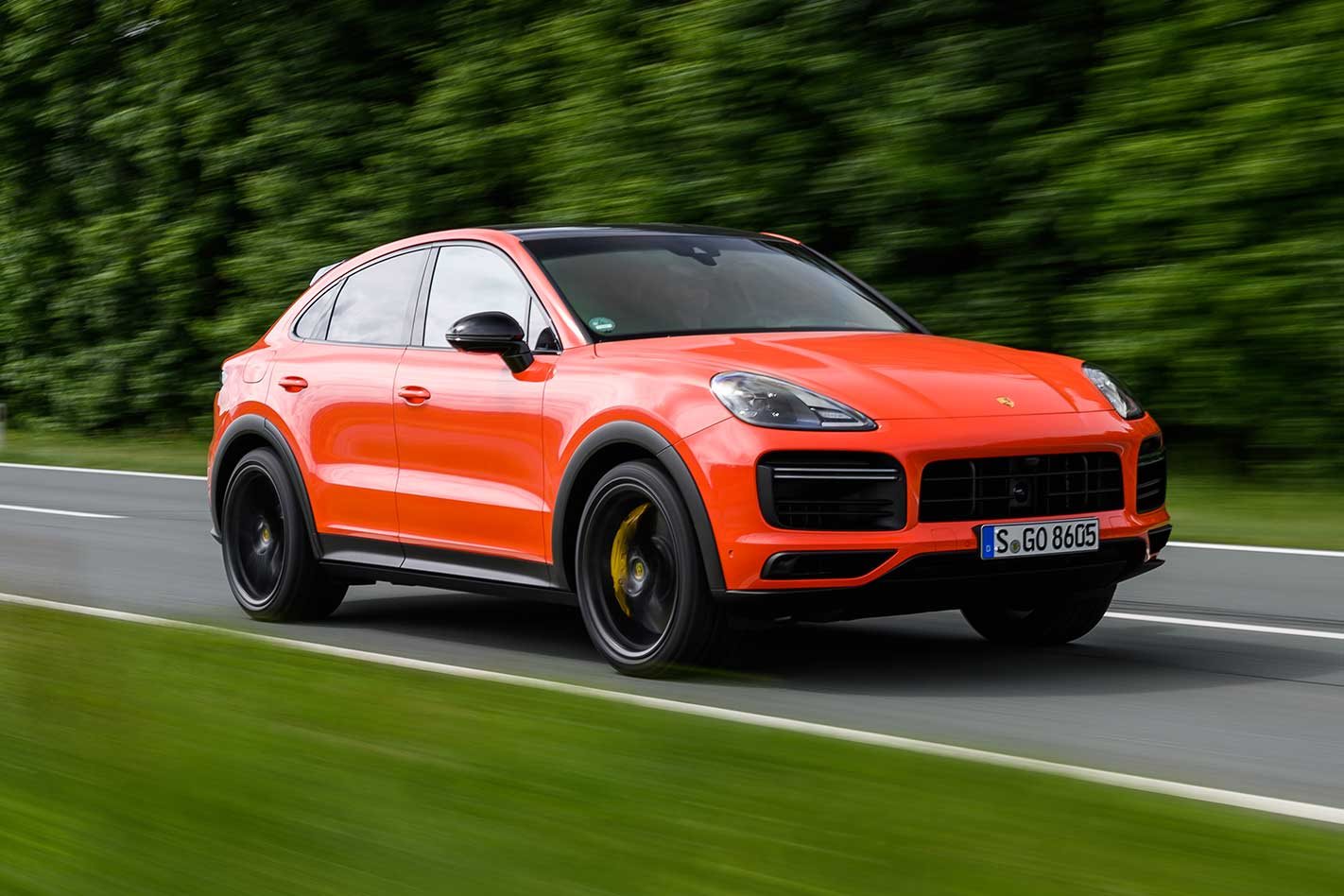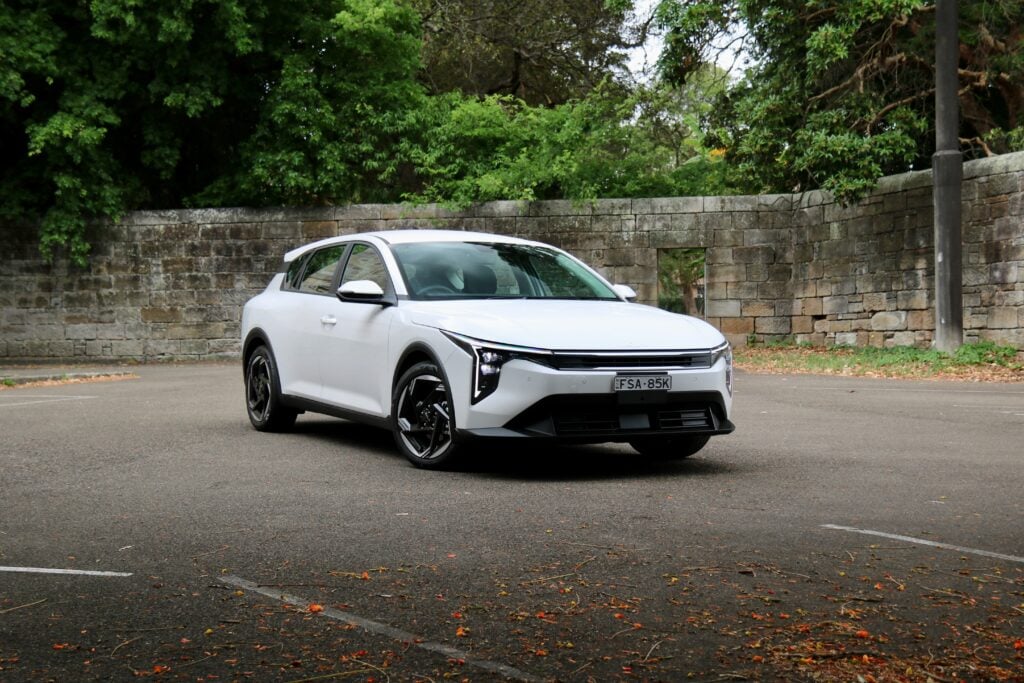Until now, the traditionally styled Cayenne was Stuttgart’s answer to the Audi Q7, BMW X5 and Mercedes GLE, but with their sleeker SUV siblings, the Q8, X6 and GLE Coupe, presenting a sportier image, Porsche had no alternative but to jump on the fastback SUV bandwagon. Meet the new Porsche Cayenne Turbo Coupe.
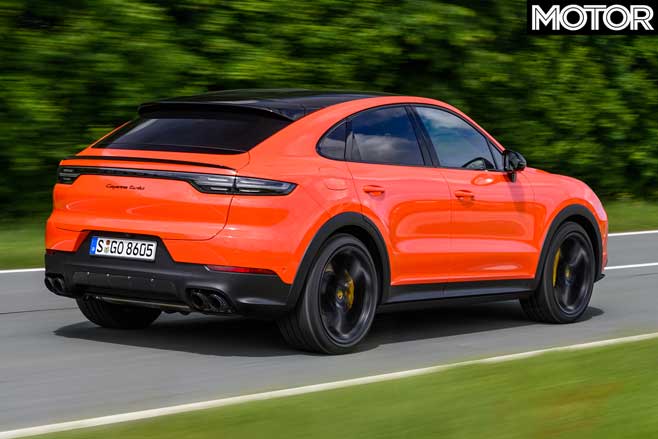
To get that windswept coupe look, you’ll have to fork out around $12,000 extra and that buys you an aggressive, in-your-face piece of kit. The low-roof Cayenne is wider, ground hugging, arguably prettier and visually different, especially at the rear where flared wheel arches, a carbonfibre diffusor, extended fixed roof spoiler and motorised second aerofoil make up the improved Porsche Active Aerodynamics system (PAA).
While the faster A-pillars and more steeply raked windscreen lower the roofline by a token 20mm, it drops away significantly from the B- to the C-pillars, affecting ease of entry and exit to the back seats. Rear headroom and ambience is (like the Lamborghini Urus) darker and more claustrophobic.
The roof and cabin trim are made from carbonfibre, it rides on matte 22-inch rims (21-inch are standard), black-and-white plaid upholstery adds a touch of classic 911, leather and Alcantara abound, and the sports exhaust exits via four fat tailpipes.
There’s a choice of two engines, the Turbo’s 404kW 4.0-litre V8 and a 254kW 3.0-litre V6, and three different sport packs. The most extreme iteration saves up to 22kg, but costs an uncool $17,000. There is also a $3270 off-road option featuring skid plates, underbody protection panels for engine and rear axle, bespoke instruments and a second tow eye. Satnav is standard but Porsche still charges extra for keyless go, digital radio and every assistance system except ABS and ESP.
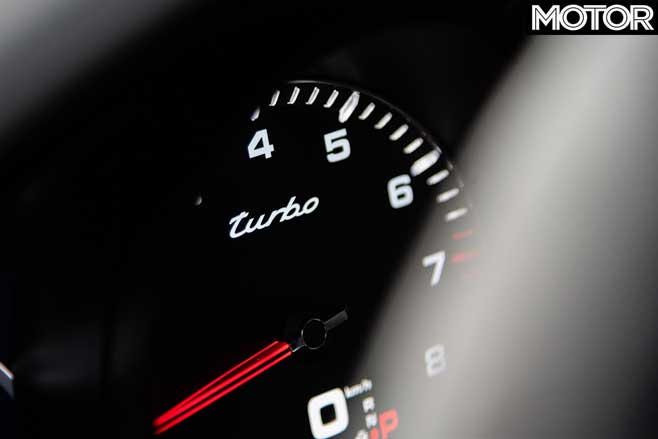
Our fully loaded test car boasted carbon-ceramic brakes (grabby and noisy), matrix headlamps (a must-have), rear-wheel steering (much more important than the even-pricier 48-volt anti-roll bars), torque vectoring (delete) and Innodrive, which includes active cruise control. Nice, but not essential, are the crowded head-up display, ventilated massage seats and Burmester sound system. Missing is any type of electrification, until the 507kW V8 hybrid arrives in 2020.
At 2275kg, the Turbo Coupe is about 750kg heavier than the new 911 but it is nearly as quick, sprinting from 0-100km/h in 3.9sec, and 0-200km/h in 14.6sec. Top speed is a remarkable 286km/h, considering its frontal area.
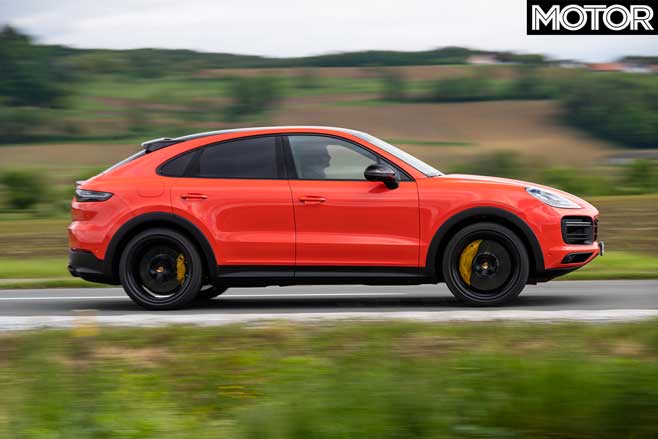
In Sport Plus with the exhaust set on max volume the Cayenne roars like a dive bomber, earning respect but not making any friends. Even in Porsche’s homeland, social acceptance is a growing issue and the zero-emission Taycan cannot arrive too soon. On that note, the Turbo Coupe did not better 15L/100km. It could have, but the temptation to gun this ‘truck’ with a sports car heart is irresistible.
On the autobahn, fast-lane regulars no longer underestimate the overtaking power of high-performance SUVs. Despite its bulk and mass, the Cayenne Turbo Coupe rules the 138 to 200km/h domain like no other ‘CUV’. With 770Nm available from 2000 to 4500rpm, and a fast-acting eight-speed transmission, only its considerable drag causes it to fall behind the 911 at the end of a straight.
Despite that, engineers turned this disadvantage into an asset, creating enough downforce to make the Cayenne Coupe the world’s first ground-effect SUV. On the A7 north of Stuttgart there are a couple of 240km/h bends which you can take flat in a GT3 – and in the Coupe. The Porsche is hugely confidence-inspiring.
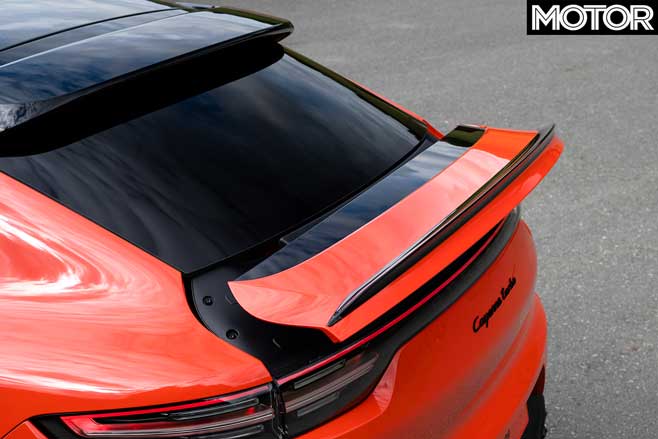
Low-speed ride is harsh and low-gear throttle response is brusque, even in Normal mode, but the Coupe has most rivals firmly under control when it comes to handling, roadholding, performance and brakes.
On a rainy day, you want the dampers in Normal, drivetrain and steering in Sport, and ESP off, because the intermediate handling mode spoils the fun before it begins. Unfortunately, you can’t lock the drivetrain in rear-drive, deactivate the diff or play with the torque split.
Selecting Sport Plus sharpens the steering, makes the suspension flex its muscles and ramps up transmission shifts. Although you’re much better off in Sport, using the shift paddles when appropriate, Normal is for cruising with Innodrive choosing the ratios.
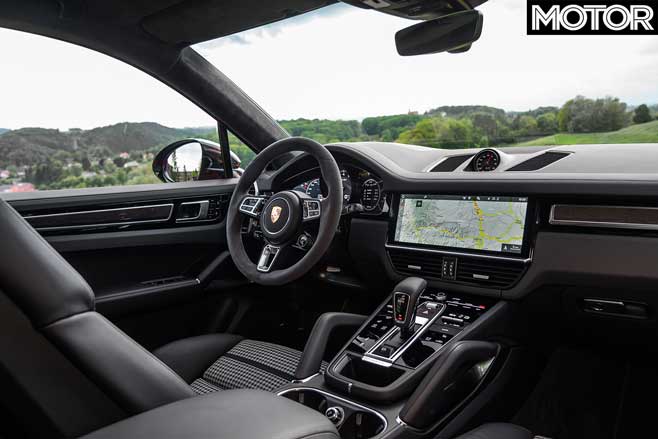
Hard cornering typically starts with a nudge of understeer followed by a long neutral phase which either turns into a brief all-wheel slide or lays down as much power oversteer as the remaining tarmac can take. With peak torque available from 2000rpm, third-gear drifts are definitely an option. In the dry, the Pirelli P Zeros and trick suspension produce unreal grip and traction, the tyres yowling for mercy.
Since even the most powerful Cayenne is unlikely to grace a racetrack, the 10-piston fixed-caliper steel brakes are fine for hard everyday use. What Porsche does so much better than just about everyone else is to sync the weight of the controls with the selected drive mode. Steering, brakes and acceleration work together with impressive subtlety and emphasis.
While the Cayenne Turbo Coupe (and maybe a Turbo S Coupe, or Turbo-S E-Hybrid) has joined the coupe SUV club, the thought of a Cayenne ‘XL Coupe’ with three rows of seats is almost unbearable.
Thankfully, when news of the BMW X8, Audi Q9 and Merc GLS Maybach started leaking out, a three-row Cayenne Coupe didn’t make it past the planning stage.
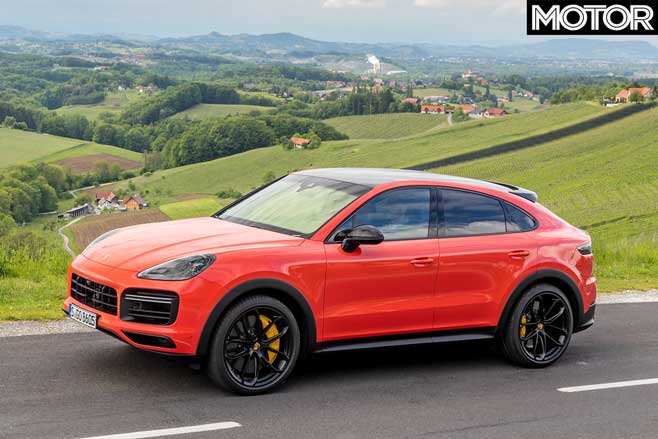
2020 PORSCHE CAYENNE TURBO COUPE SPECS Engine: 3996cc V8, DOHC, 32v, twin-turbo Power: 404kW @ 5750-6000rpm Torque: 770Nm @ 2000-4500rpm Weight: 2275kg 0-100km/h: 3.9sec (claimed) Price: $254,000 (est)
Like: Brakes, 911-humbling performance, astonishing grip, high-speed stability, plaid seats Dislike: Harsh ride, pricey options, rear seat space, weight, fuel consumption
Rating: 4.5 out of 5 stars

